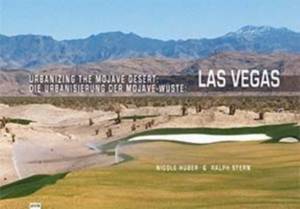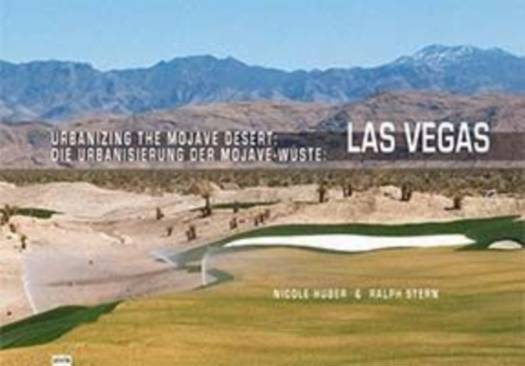
- Afhalen na 1 uur in een winkel met voorraad
- Gratis thuislevering in België vanaf € 30
- Ruim aanbod met 7 miljoen producten
- Afhalen na 1 uur in een winkel met voorraad
- Gratis thuislevering in België vanaf € 30
- Ruim aanbod met 7 miljoen producten
Zoeken
€ 20,95
+ 41 punten
Omschrijving
Flashing facades, garish casinos, and neon lights--isn't that our image
of the gambling metropolis of Las Vegas? But what of the city that lies
beyond The Strip? Urbanizing the Mojave Desert: Las Vegas shows
us the unknown, desolate side of Las Vegas and its environs. There,
where the suburbs in the desert encroach on nature and change it, the
book reveals the surprising connections between the architecture that
defines the image of Las Vegas and the natural, abstract geometries of
the Mojave Desert. In Learning from Las Vegas Robert Venturi and
Denise Scott-Brown focused on the glamor of the Las Vegas Strip,
analyzing the city for its postmodernist qualities while ignoring the
Mojave desert immediately beyond. Exploring the city at the same time as
Venturi and Scott-Brown, the renowned architectural historian and
critic Reyner Banham focused his attention on what he saw as the
strikingly modernist spaces of the Mojave desert and disregarded the
postmodernist lure of the Strip. Urbanizing the Mojave Desert: Las Vegas
takes a different tack, presenting Las Vegas as a hybrid landscape
shaped and reshaped by practices of everyday urbanization as they have
taken place upon this arid land. This perspective reframes the seamless
surfaces of draped neon lights, curtain walls, and landscape features
layered onto the Mojaveʼs stark topography, uncovering distinct strata
that re-spatialize the social, cultural, and environmental implications
of urbanizing a fierce yet fragile desert.
of the gambling metropolis of Las Vegas? But what of the city that lies
beyond The Strip? Urbanizing the Mojave Desert: Las Vegas shows
us the unknown, desolate side of Las Vegas and its environs. There,
where the suburbs in the desert encroach on nature and change it, the
book reveals the surprising connections between the architecture that
defines the image of Las Vegas and the natural, abstract geometries of
the Mojave Desert. In Learning from Las Vegas Robert Venturi and
Denise Scott-Brown focused on the glamor of the Las Vegas Strip,
analyzing the city for its postmodernist qualities while ignoring the
Mojave desert immediately beyond. Exploring the city at the same time as
Venturi and Scott-Brown, the renowned architectural historian and
critic Reyner Banham focused his attention on what he saw as the
strikingly modernist spaces of the Mojave desert and disregarded the
postmodernist lure of the Strip. Urbanizing the Mojave Desert: Las Vegas
takes a different tack, presenting Las Vegas as a hybrid landscape
shaped and reshaped by practices of everyday urbanization as they have
taken place upon this arid land. This perspective reframes the seamless
surfaces of draped neon lights, curtain walls, and landscape features
layered onto the Mojaveʼs stark topography, uncovering distinct strata
that re-spatialize the social, cultural, and environmental implications
of urbanizing a fierce yet fragile desert.
Specificaties
Betrokkenen
- Auteur(s):
- Uitgeverij:
Inhoud
- Aantal bladzijden:
- 192
- Taal:
- Engels
Eigenschappen
- Productcode (EAN):
- 9783939633501
- Verschijningsdatum:
- 1/10/2008
- Uitvoering:
- Hardcover
- Formaat:
- Genaaid
- Afmetingen:
- 158 mm x 217 mm
- Gewicht:
- 589 g

Alleen bij Standaard Boekhandel
+ 41 punten op je klantenkaart van Standaard Boekhandel
Beoordelingen
We publiceren alleen reviews die voldoen aan de voorwaarden voor reviews. Bekijk onze voorwaarden voor reviews.








